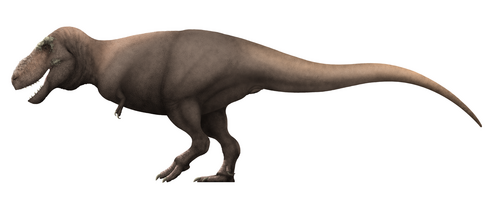
Tarbosaurus
Tarbosaurus bataar, a fearsome ancient predator, dominated Asia's Cretaceous landscapes. With a colossal skull and crushing jaws, it hunted large prey, showcasing its role as a top predator. Its distinctive features and predatory prowess make it a fascinating subject of paleontological study.
25 years
Lifespan
3991.63 - 4989.52 kg
Weight
Length: 9.75 - 11.89 m; Height: 6.096 m
Size
Medium
Aggression
25 mph
Top Speed
Characteristics
Tarbosaurus bataar, a cousin of Tyrannosaurus rex, roamed Asia during the late Cretaceous period. It was a formidable predator, distinguished by its massive skull, powerful jaws, and tiny forelimbs. This theropod dinosaur thrived in river valley habitats, preying on large herbivores and playing a vital role as an apex predator.
Distribution Range of the Tarbosaurus
Tarbosaurus bataar is native to Central Asia, specifically found in the region that is present-day Mongolia. Fossils of this species have been primarily discovered in the Nemegt Formation of the Gobi Desert.
Tarbosaurus's Habitat
Environmental Conditions
The Tarbosaurus bataar inhabited semi-arid to arid environments typical of the Late Cretaceous period. The region was characterized by a warm climate with seasonal variations, including wet and dry periods. The landscape comprised a mix of river floodplains, forests, and open areas.
Ecological Niche
Tarbosaurus bataar occupied the ecological niche of a top predator, similar to its relative Tyrannosaurus rex. It likely preyed on large herbivorous dinosaurs that shared its habitat, utilizing its massive size and powerful jaws. The species' adaptations suggest it was well-suited for hunting in the varied terrain of its environment.
Copyright @ Nature Style Limited. All Rights Reserved.
 English
English